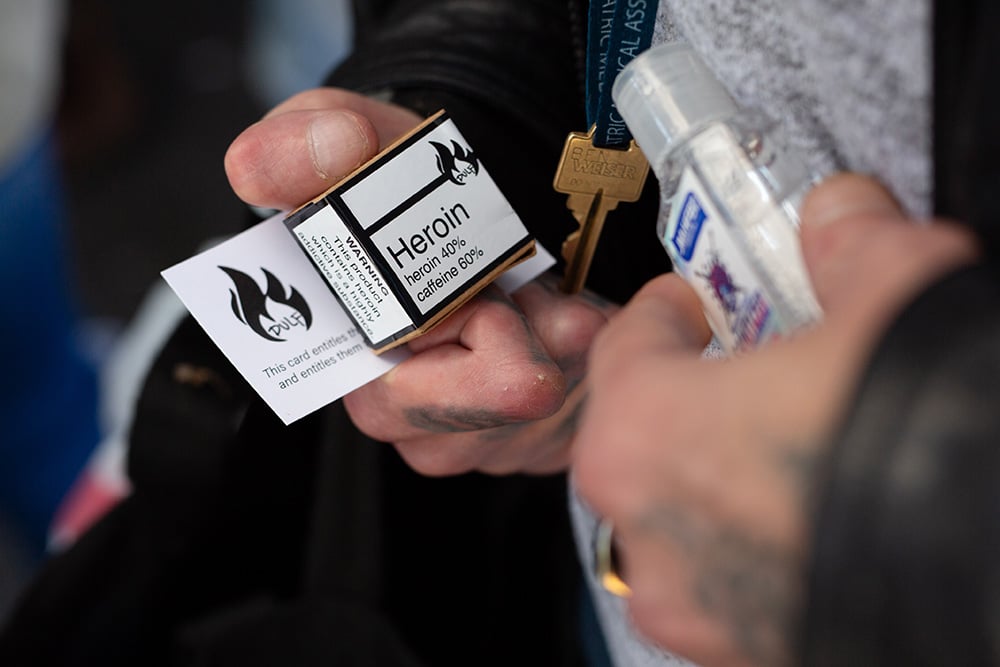Intervention without human rights goes by many names — involuntary institutionalization, compulsory drug treatment, “coerced care,” forced abstinence or a combination of all of those terms.
Involuntary treatment in the Global South has been labelled inhumane by rights-based organizations, including the United Nations Office on Drugs and Crime, the Joint United Nations Programme on HIV/AIDS and Human Rights Watch.
But after years of housing unaffordability, an increasingly poisonous drug supply and inaccessible voluntary mental health supports, mainstream political parties in Canada — including Alberta’s United Conservative Party seeking election today — are seemingly toying with the idea of making the people most affected by inequality and poverty simply disappear via involuntary institutionalization.
The BC NDP under David Eby, as well as Kevin Falcon’s BC United party have floated the idea of expanding forced institutionalization to include aspects of substance use.
In Alberta, Danielle Smith’s UCP has also proposed apprehending those with, in her words, “severe drug addiction.”
Increased risk of overdose
Pivot Legal Society, Eby’s former employer and a human rights organization, has responded with a statement condemning the practice. It was endorsed by 16 other community organizations.
The evidence shows that forced treatment leads to increased risk of death and deprives survivors of autonomy, while no positive benefits have been established. The discretionary power to forcibly institutionalize people also causes harm in health-care services on a systemic level.
From Mexico to Sweden, Vancouver and England, involuntary treatment has been found to increase risk of overdose and shows no significant impact on substance use patterns.
Studies on involuntary treatment for psychiatric reasons also show negative outcomes. Not only is forced institutionalization deeply traumatic, it’s associated with longer stays in hospital, increased hospital readmission rates and a greater likelihood of dying by suicide upon discharge.
Lowered tolerance
Being discharged after involuntary drug treatment has long been linked to overdose risk, even before the drug supply was as poisonous and unpredictable as it is now.
Data from the United States shows that from 2010 until 2017, all inpatient forms of substance use treatment, even those that included prescribed alternatives, increased the risk of overdose upon discharge.
The association between forced treatment and overdose has been made clear in studies of both existing pathways of involuntary institutionalization in B.C., namely the criminal justice system and public health mechanisms.
These overdoses are trending away from being predominantly non-fatal to being deadly due to the toxicity of the supply. People are being discharged into the same living conditions with lowered tolerance.
Settler colonial violence continues
In B.C., young people cannot be involuntarily institutionalized for substance use alone. But reports suggest it is occurring through misuse of the province’s Mental Health Act.
The BC NDP proposed involuntarily institutionalizing youth who experience overdoses in 2020, but dropped the idea after intense scrutiny from advocates with lived experience of forced detention, drug policy experts and academics.
Involuntary psychiatric detentions among youth, however, are at an all-time high in the province.
According to B.C.’s Representative for Children and Youth, more than 2,500 children, some as young as 10 years old, were hospitalized against their will in 2018. That’s a 162-per-cent increase since 2008.
As with most punitive and carceral policies in Canada, the province’s Mental Health Act is used disproportionately against Indigenous people in British Columbia, including children — a disturbing continuation of the violence against Indigenous children that Canada is founded upon.
The B.C. Ministry of Health has acknowledged the over-representation of Indigenous children involuntarily detained in the province, though it says it’s not aware of the extent because provinces aren’t required to record patient ethnicity.
Relying on involuntary treatment
Involuntary psychiatric hospitalizations under the B.C. Mental Health Act for those older than 14 also increased to 23,531 from 14,195 from 2008 until 2018 in the province.
The liberal use of forced interventions is in part due to B.C.’s abysmal voluntary mental health service landscape characterized by lengthy wait times, high access fees, capacity shortages and a lack of culturally appropriate services. This creates barriers for people seeking timely support.
Relying on a system designed to criminalize drug use, while temporarily stabilizing people via involuntary mental health treatment, risks causing further harm, trauma and death.
Forced institutionalization is weaponized against drug users already; 18.8 per cent of apprehended people in B.C. had a primary diagnosis of substance use disorder. Likewise, 10 per cent of involuntarily hospitalized youth were labelled as having the disorder from 2013 to 2018.
Moral panics
Expanding forced treatment in Canada and elsewhere stems from the same moral panics that drove earlier drug prohibition regimes imposed through colonial power.
Instead of locking people up against their will, governments should intervene in the poisoned drug supply and turn to other more humane methods including compassion clubs for drug users as advocated by drug user groups and frontline workers.
Provinces should collaborate with municipalities and health boards to expand life-saving and life-affirming safe use sites, and all levels of government must urgently prioritize solutions to the housing crisis.![]()
![]()
Read more: Health, Rights + Justice, Alberta















Tyee Commenting Guidelines
Comments that violate guidelines risk being deleted, and violations may result in a temporary or permanent user ban. Maintain the spirit of good conversation to stay in the discussion and be patient with moderators. Comments are reviewed regularly but not in real time.
Do:
Do not: